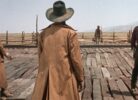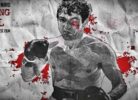To celebrate the upcoming release of my book, Akira Kurosawa: A Viewer’s Guide, due out Dec. 15 from Rowman & Littlefield — preorder here! — I’ll be doing capsule reviews all month covering every single Kurosawa film and posting (very) brief excerpts. These will be short impressions and recommendations, nothing more. For a full, detailed analysis of each, grab the book!
Ran (1985)
Ran is a masterpiece, one of the greatest films of all time, and you should do everything in your power to see it right away.
That really could be the sum total of this capsule review, because it’s true, and if I start talking about what makes this film so great I’ll either start to gush or will end up writing a whole new chapter for my book. I don’t want to do either, so I’ll make this far quicker than the film deserves.
Ran is a re-imagining of Shakespeare’s King Lear. Here, a father who built his kingdom through violence seeks to pass it on to his sons in his twilight years, but rivalries, mistrust, and the legacy of his bloody past threaten to tear it all down.
This film is huge. I’m talking hundreds of extras on horseback staging his battle scenes and building entire castles for the production only to burn them down huge. It’s colorful. It’s beautiful. It’s thought-provoking. It’s exciting. Over Ran’s two-and-a-half hours, you’ll see the culmination of 10 years of work Kurosawa put into refining the script, visuals, and ideas for this movie. He started dabbling with the idea in 1975, but wouldn’t actually direct it until he was around 75 years old. It would in many ways be his final masterpiece.
Fitting, then, that so much of the film is concerned with a once powerful, aging man dealing with what his legacy will be. From the book:
Perhaps Hidetora is a metaphor for Kurosawa himself, the three sons manifestations of the film industry Kurosawa once believed so strongly in. Once he showed weakness, the industry turned on him. Abandoned him. Left him struggling to retain even a small amount of the honor he once enjoyed. At one time Kurosawa wished death, too, attempting to take his own life in 1971. A few short years later, he would begin the earliest drafts of Hidetora’s story, a story of a man toppled by the things he was proudest of.
But that’s a bit lofty, and watching Ran need not be a lofty experience.
One of the things that makes Ran great is that, much like Seven Samurai, its headier themes are also embedded in what is nothing short of a thrilling adventure. Here, sweeping vistas, huge armies clashing, shocking bloodshed, and exciting intrigue make Ran a fantastic watch even for viewers who just want to be entertained.
That’s a big part of Kurosawa’s power, in fact: That films like Seven Samurai, Rashomon, Ikiru, Stray Dog, and many others can exist simultaneously as “simple” entertainment and as rich commentaries on the human condition.
I could go on. I want to go on. But these are meant to be quickie reviews, so I won’t! Instead, I’ll simply say that if you love big, sprawling historical epics like Lawrence of Arabia and Ben-Hur, you need to see this movie!
Check out my upcoming book for a full analysis exploring this film’s ideas, themes, good points, and bad
You can get the movie in this excellent home release.








Pingback: Great Reasons to Visit Japan – ERIC SAN JUAN
Pingback: A Month of Kurosawa: Rhapsody in August (1991) – ERIC SAN JUAN